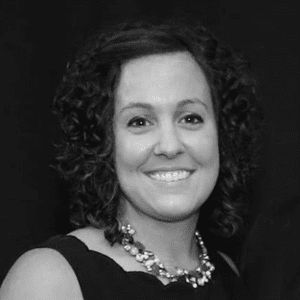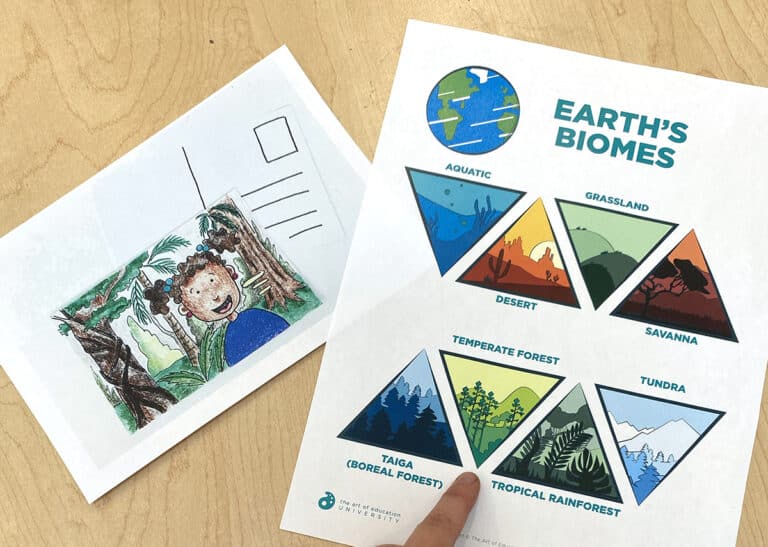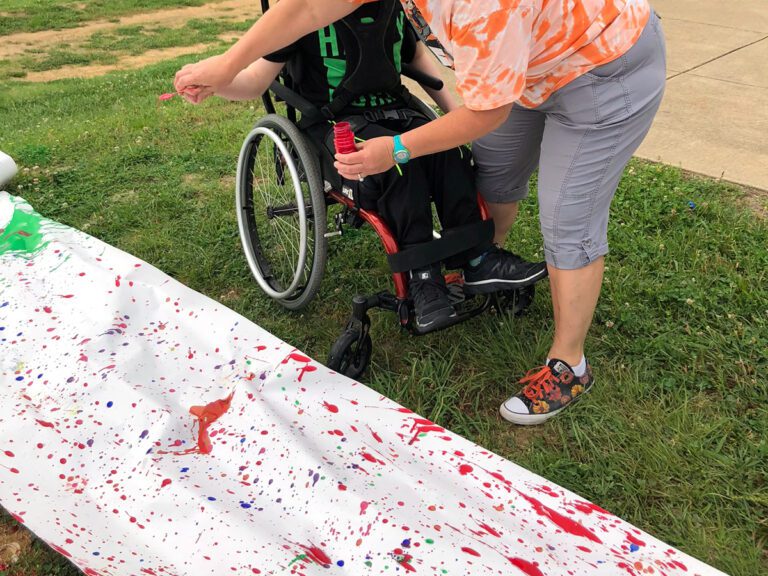As I sat down to read one of our favorite books, The Berenstain Bears and Too Much Birthday, to my daughter the other night, I saw the concept of Student Growth played out in the most innocent form. “Look how much you’ve grown in the past year,” Sister Bear’s mom says to her, showing a drawing and some writing examples of her improvement from Kindergarten to 1st grade.
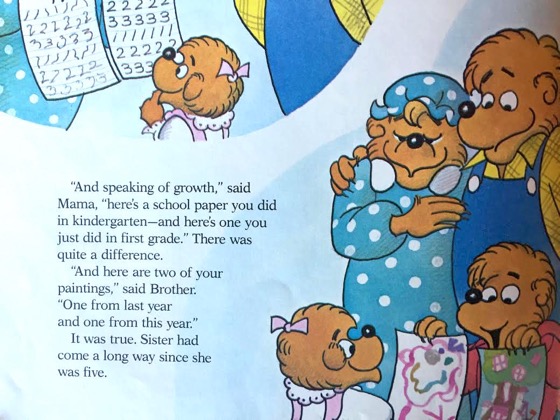
Ahh… if showing growth was as simple as holding up two pictures and saying – look! You’ve grown! Although writing a really good SLO seems simple, getting quality data that is meaningful is another thing.
There is one thing, however, that will make the entire process feel more authentic– tracking something you actually believe in.
Ask yourself: What do you want your students to learn by the end of the year? Pretend no one is twisting your arm or making you fill out extensive paperwork. What are your true and authentic wishes for your students?
I’ve mentioned this before, but it’s worth saying again: When choosing a growth goal to track, ask yourself,
What is an art concept that I teach that is SO important I would be embarrassed if my students walked out of the classroom and didn’t know it?
What is an art concept that I teach that is SO important I would be embarrassed if my students walked out of the classroom and didn’t know it?
The secret to finding the perfect topic for your SLO is to choose something you care about. When you first became an art teacher, what were some of the basic things you hoped you could teach students in art? The more meaningful your goal is, the less grueling the data collection process will be.
You see, I believe we shouldn’t rearrange our curriculum for new initiatives. We should find ways to make new, top-down initiatives work with what we are already doing. This requires a little bit of creativity and artistry.
I am sure a list of ideas is forming in your mind. Even better, let’s brainstorm topics together, just like our participants have a chance to do during one of the assignments in AOE’s online class “Showing Student Growth in Art.”
Inspired by the great conversations students are having in this class, here is a list of 20 topics you might consider tracking for your SLO.
- Fine motor skills – cutting, drawing, gluing
- Talking about artwork
- Writing about artwork
- One (or several) of the Elements and Principles of Design
- One of the Studio Habits of Mind
- One of the New Visual Art Standards
- Creativity (hard to assess, but possible!)
- Time on task or engagement
- Proper care and use of materials
- Portfolios
- Vocabulary words and definitions
- Art history periods or concepts
- Techniques – brush strokes, wheel throwing, etc…
- Technology – camera settings, photoshop techniques, iPad apps, etc…
- Describing artistic processes
- Genre – self-portrait, landscape, still life, etc…
- District-specific standards or common core state standards
- Writing an artist statement – through Artsonia or the ‘old fashioned’ way
- Museum etiquette
- Expressing ideas or philosophies through artwork
You can download a PDF of this list to take back to your art department right here.
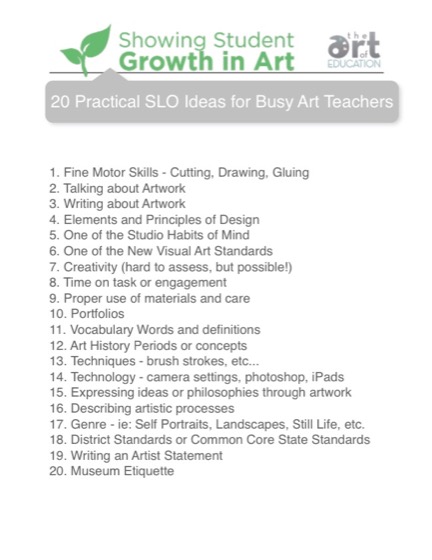
Keep in mind, the pre-test data you glean can make the topic decision for you, too. If all students bomb a pre-test on one-point perspective, chances are, it would make an excellent growth goal because there is a lot of room to, well, grow!
I’d love to hear about the topic you chose for your growth goal this year and how it worked for you. Please share in the comments section!
What would you add to this list?
Are you working on a growth goal right now that you are really enjoying?
Magazine articles and podcasts are opinions of professional education contributors and do not necessarily represent the position of the Art of Education University (AOEU) or its academic offerings. Contributors use terms in the way they are most often talked about in the scope of their educational experiences.
